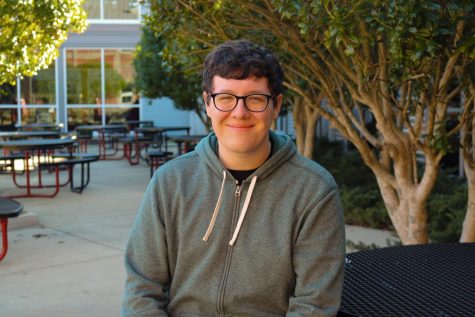Careful What You Wish For
March 1, 2019
During this year’s presentation of the Grammy Awards, Disney dropped an unexpected trailer for their upcoming reboot of Aladdin. The trailer was very strong and featured heavily on Agrabah’s live-action reinterpretation, as well as feature shots on Aladdin’s major players. The trailer did a fantastic job of bringing the classic tale to life in a way audiences have yet to see. And then, it happened. Aladdin got his hands on a golden oil lamp. The chords from “Friend Like Me” blared on speakers all across the country. As the smoke faded, Will Smith’s character of the Genie was unveiled. Oh boy.
The debut of Will Smith’s Genie has sparked heated debate on the Walt Disney Company when it comes to the use of Computer Generated Imagery (referred to as CGI) to recreate the nonhuman creatures that populate Disney’s mythos.
However, the CGI within these remakes are not all bad, not even the CGI characters within the Aladdin remake are perceived as low-quality. The Genie is one of five completely CGI characters within the film. The main characters’ sidekicks Abu, Rajah, Iago, as well as The Magic Carpet are computer generated. The reactions to these characters have been positive, as has the rest of the trailer.
The problem within recreating the Genie is reproducing the same film without the artistic vision of the late Robin Williams. The character design behind William’s Genie is based within the fluidity and livelihood of his performance. Robin Williams was able to bounce between dozens of impressions and characters. His Genie’s anatomy was built to be fluid enough to flow so that it could morph to visualize his gags. Smith’s Genie is built not for his comedic talents, but for the style of the overall film. Where the original Genie was designed to fit the style of Robin Williams, Will Smith’s Genie was designed to fit the style of the Live-Action Remake formula.
Will Smith’s Genie is so off-putting because he is so drastically different on a fundamental level. William’s Genie has no elbows or clear bone structure. His body is designed to be made of smoke and liquid. In the format of the remake, Will Smith’s Genie was designed in order for the film to look as believable as it can so it will not seem out of place. Even though the Genie’s design is different and somewhat unsettling, it does not mean the visual effects are bad overall. The visual effects team of film and television crews are immensely talented artists that deserve respect. It’s hard work. It is a valid art form even if it does not always fit our expectations.
The main problem does not lie within the Genie’s look. It lies within the idea of anyone playing the Genie aside from the legendary Robin Williams. In December 2018, Entertainment Weekly provided images from the film that showed the Genie taking on a human disguise, much like he does during the Prince Ali number in the 1992 film. These images were met with backlash over a non-blue Genie, assuming he would not be blue at all. So, it only stands to reason that the problem is not within the film itself, but with having to embrace change and letting go of a beloved figure that told us the only limitations in our life are placed by our own perception of our world.
Saying goodbye to Robin Williams was especially hard for me, as he was one of my childhood role models. Robin Williams was an artist. His life and raft were dedicated to the art of self-expression and bringing smiles and laughs to the world when it seems at its bleakest. Should we not be dedicated to those same ideals as well? Will Smith is a big departure from the comedy legend, and that’s okay. Aladdin’s story and message deserve to be shared again. Both to us, in a bleak time when a part of our inner child is not as revered, and to the new generation who might experience Genie’s special brand of magic for the very first time.
Disney’s Aladdin hits theaters on May 24th, 2019.


